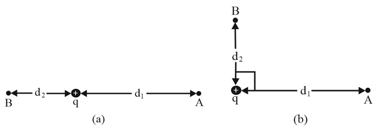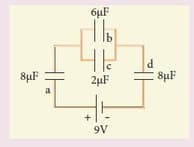Embibe Experts Solutions for Chapter: Electrostatic Potential and Capacitance, Exercise 1: Exercise
Embibe Experts Physics Solutions for Exercise - Embibe Experts Solutions for Chapter: Electrostatic Potential and Capacitance, Exercise 1: Exercise
Attempt the practice questions on Chapter 5: Electrostatic Potential and Capacitance, Exercise 1: Exercise with hints and solutions to strengthen your understanding. Physics Crash Course (Based on Revised Syllabus-2023) solutions are prepared by Experienced Embibe Experts.
Questions from Embibe Experts Solutions for Chapter: Electrostatic Potential and Capacitance, Exercise 1: Exercise with Hints & Solutions
Consider a particle with charge , point at distance from and the point at distance . If and are diametrically opposite to each other as in the figure, (a) what is the electric potential difference ? (b) what is the electric potential difference if and are located as in the figure (b)?

Show that electric potential at a point , at a distance from a fixed point charge is given by
Explain dielectrics in detail and how an electric field is induced inside a dielectric.
For the given capacitor configuration, find the charges on each capacitor, potential difference across them and energy stored in each capacitor.
A parallel-plate capacitor having plate area and separation between the plates is connected to a battery of . The plates are pulled apart to increase the separation to
Calculate the charge flown through the circuit during the process. How much energy is absorbed by the battery during the process?
Calculate the stored energy in the electric field before and after the process.
Using the expression for the force between the plates, find the work done by the person pulling the plates apart.
Show and justify that no heat is produced during this transfer of charge as the separation is increased.
What is corona discharge?
Explain in detail how charges are distributed in a conductor, and the principle behind the lightning conductor.
Explain in detail the construction and working of a Van de Graaff generator.

